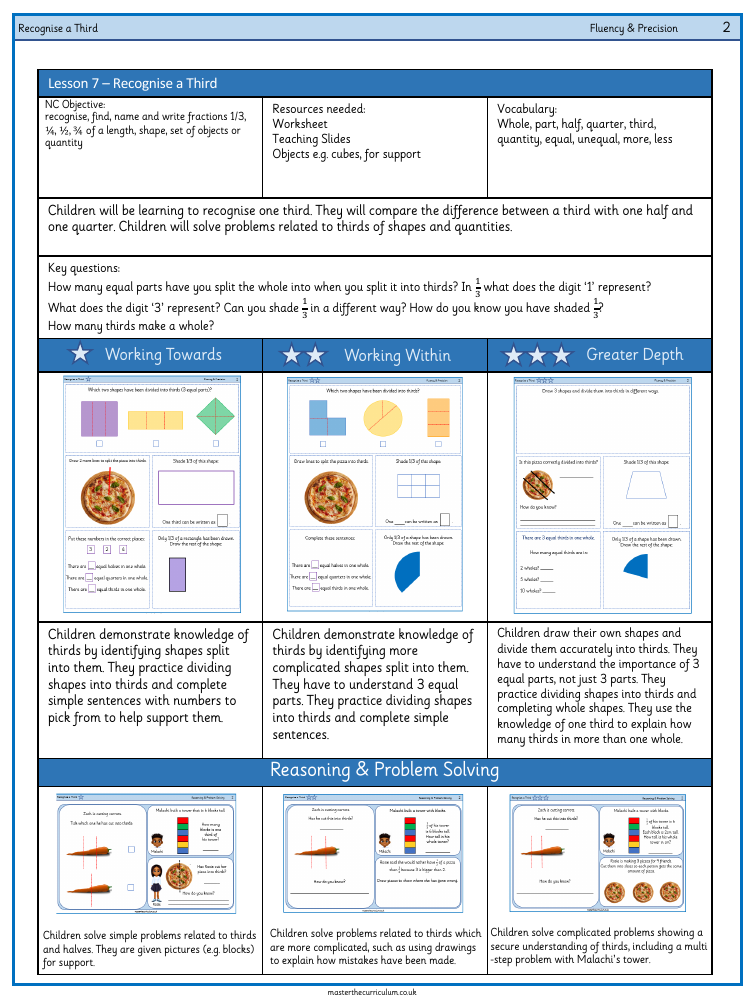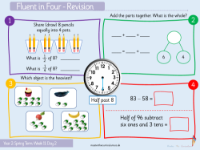Fractions - Recognise a third - Worksheet

Maths Resource Description
The "Recognise a Third" worksheet is an educational resource aimed at helping Year 6 students understand and work with the concept of one third. As part of the National Curriculum objective, students are expected to recognise, find, name, and write fractions such as 1/3, 1/4, 1/2, and 3/4 of various entities, including lengths, shapes, sets of objects, or quantities. To facilitate this learning, the worksheet is used alongside teaching slides and physical objects like cubes for practical demonstrations. The vocabulary for the lesson includes terms such as whole, part, half, quarter, third, quantity, equal, unequal, more, and less. Students will engage in activities where they identify and shade one third of a shape, compare thirds with halves and quarters, and solve problems that require an understanding of dividing shapes and quantities into thirds.
The worksheet is designed to cater to different levels of proficiency, with tasks ranging from recognising thirds in simple shapes to solving more complex problems that require a secure understanding of the concept. For instance, students may be asked to identify which shapes have been divided into equal thirds, draw additional lines to divide a pizza into thirds, or shade one third of a given shape. They will also complete sentences to reinforce their understanding, such as stating the number of equal halves, quarters, and thirds in a whole. More advanced problems involve drawing shapes and dividing them into thirds in various ways, as well as reasoning and problem-solving tasks that challenge students to apply their knowledge to real-world scenarios, such as determining if a pizza has been cut into equal thirds or calculating the total height of a block tower based on a fraction of its size. This multifaceted approach ensures that students not only learn to recognise and write fractions but also understand their practical applications.




